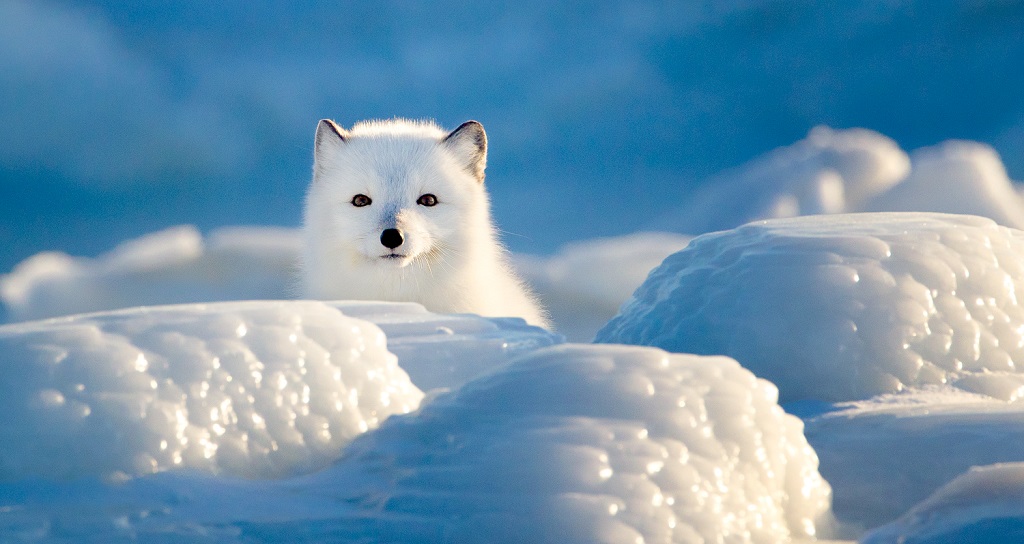Arctic Fox. Seal River Heritage Lodge. Gordon Fox photo.
Akkach · 7 months ago
More elusive in the summer, Arctic foxes come out in their full marshmallow-y glory in the fall. Their grey-brown coats turn a pristine white and they fluff up to the size of a large housecat, with their tail making up one third of their length. Changing colours throughout the year allows them to camouflage themselves, whether predator or prey. People often wonder how something so small survives the sub-zero temperatures, but Arctic foxes have adapted to their environment surprisingly well. Their small ears, muzzle, and short legs reduce the surface area exposed to the cold. Research has shown it takes temperatures of -70°C or -94°F to even get Arctic foxes to shiver. Now that’s cold! And just in case you’re wondering, polar bears don’t shiver easily either. They normally have a harder time not overheating, thanks to two coats of fur and a thick layer of insulating fat.
